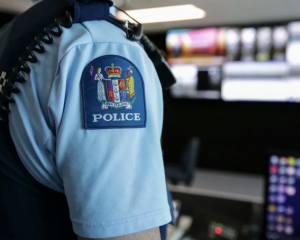Two men buried by a large avalanche near the top of Mount Taranaki this morning emerged with only minor injuries after digging themselves out.
The men, aged in their 30s and 40s, contacted emergency services using a mobile phone from the northeast side of the mountain about 11am following their ordeal.
Police spokesman Acting Inspector Bruce Mackay said one of the men had a suspected dislocated shoulder, the other was thought to have broken his ankle.
It was understood both men were airlifted off the mountain to waiting paramedics at its base this afternoon.
Taranaki rescue helicopter pilot Sam Richmond said he believed the men had been at least partially buried by snow and had dug themselves out.
Two Taranaki alpine rescuers were lowered down to the men, who were about 2.1km up on a steep slope.
A second rescue helicopter with a winch flew from Taupo to lift them off the mountain.
Mr Richmond said he could see the path where the avalanche had hit when hovering over the scene.
"It's a bit like the footage you see off TV - it went a good 400m down the mountain, in between a couple of ridges.
"The valley itself was fairly narrow - about 40m - which probably would have concentrated the force of the avalanche. Because of the size of the valley it wouldn't have been easy to escape."
Mr Richmond said the two men could count themselves lucky.
"I would think anyone who gets caught in an avalanche is probably lucky to get out alive. Certainly, if you get buried then you can't breathe, and if you can't dig yourself out then you're in trouble. If you smack a rock with the wrong part of your body then that would hurt".
"It looked like they were pretty well prepared - they had all the gear, including a survival blanket, which is what we noticed first, glinting in the sun, so we were able to determine their position pretty quickly."
Flying at such a high altitude had tested the helicopter's capabilities, but conditions had otherwise been kind.
"The engines have got less air to mix with the fuel so they put out less power and also the air's less dense so there's less for the blades to bite in to so control is less firm, it sort of wallows around a little bit, Mr Richmond said.
"We were probably quite lucky in that it was a beautiful days and it was reasonably benign in terms of wind and turbulence."
Mr Mackay said the rescue had gone "very smoothly".
Emergency services had been able to maintain phone good contact with the men throughout the operation and had located them quickly.
"If it was a bad day it would be a different story with getting the helicopter in," he said.













